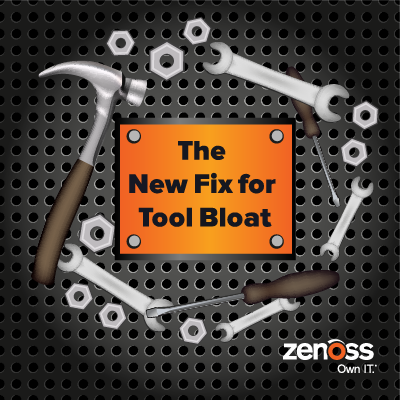
The tool bloat problem is not new for anyone who has been in this business for more than a minute. In the old days, when IT teams were comprised of specialists in servers, storage, networking, databases and so forth, each group of specialists had a favored tool set that showed them how their little patch of the world was functioning. Since no one understood the whole system, reps from each constituency had to gather together to solve problems. Everyone involved got really good at using the tool set at their disposal, which no one else understood, in order to find all kinds of evidence proving that the incident being investigated definitely didn’t start with their systems.
This worked about as well as you think it did, which led some smart people to land upon the notion of feeding all the data describing infrastructure health and performance to a single system that everyone could see. This is where the term “monitor of monitors” (MoM) came from. And in ideal conditions, it allowed the entire infrastructure team to work off the same dataset, share information back and forth, and identify root cause and remediation steps in a coordinated way. Numerous products got pretty good at being MOMs, including Zenoss Service Dynamics, and the IT world was harmonious for a while with absolutely no finger-pointing anywhere ever.
But then, (insert platitude about digital transformation) happened. One of the big effects of this has been that the business often wants to move faster than the infrastructure is able to support. When IT is unable to provide LOB teams with the relevant data points they need in a consistent, timely, scalable way, those teams go shopping elsewhere to find tools that solve their problems. Forrester Research found that 24% of global services decision-makers were making IT/technology purchase decisions without IT involvement last year.
It’s bad enough when rogue IT teams buy their own tools, but when business units try to buy their own IT solutions, a whole new level of chaos can result. The growing use of DevOps teams in the enterprise is also causing a rapid increase in app infrastructure that needs to be monitored. The proliferation of hybrid cloud and serverless compute models further exacerbates the scale of this issue. It’s not uncommon for some enterprises to have over 50 tools monitoring overlapping patches of applications and infrastructure, often without sharing data. Since these solutions often bear little resemblance to the IT point tools of yore, the standard MOM approach doesn’t work.
In a recent study, Forrester has found that AIOps solutions (like Zenoss) are evolving to solve these emerging problems. Not only can all the data be collected and presented in a single place (like a MOM would do), but that aggregated data can then be analyzed by the system to look for out-of-bounds performance and identify the cause. More advanced AIOps systems can assess the business impacts of issues and even automate resolution steps to minimize said impact.
To learn more about the two approaches Forrester recommends when evaluating AIOps solutions for deployment, hit this link to download the report.







